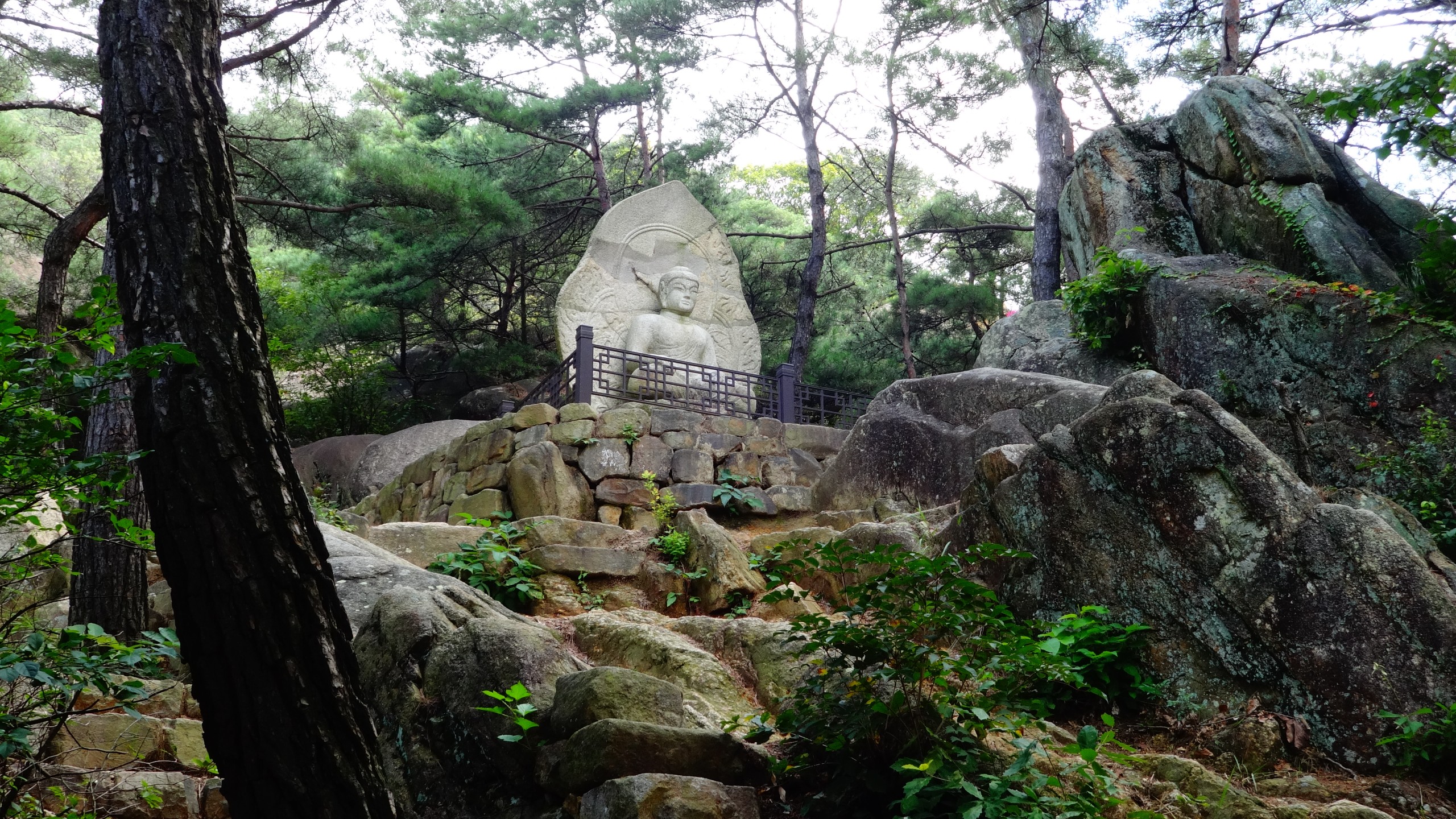
DAY 5
(Reading time: 6 minutes)
It hasn’t been long since I started learning Korean. It’s a difficult language, and I don’t need it for my profession. It’s really just my hobby, but I dedicate myself to it with love and motivation. The biggest challenge for me is speaking – there’s no one to practice with (except for my teacher), nowhere to practice and no reason to. However, after today, I can confidently say that I successfully faced my first battle with spoken Korean in South Korea.
We planned a full-day trip to Samneung Valley in Gyeongju National Park, following the footsteps of Buddha statues and stone carvings. As you can see below, the Korean transportation system is quite convenient to English-speaking tourists…

…so we first went to a tourist information centre to gather info on which bus would take us closer to our destination. Thanks to at least a basic level of Korean we managed to understand each other somewhat and left with directions on which combination of the bus line number and Korean characters (the name of the bus stop) to look for.
Another challenge awaited us at the bus stop where no bus arrived, even though it was supposed to. Eventually, we managed to hop on it as it was leaving the depot, along with another passenger. We reached the Samneung bus stop and set out on the marked trail towards the summit of Geumobong. The day could finally begin.

START – Samneung / Namsan Information Centre
POINT 2 – viewpoint of the valley and the Buddha Seokgayeorae
POINT 3 – Geumobong Peak (468m)
POINT 4 – Namsan-dong
DESTINATION – Borisa Temple
The area around Mount Namsan, including Samneung Valley, is literally covered with Buddhas – statues with heads, without heads, heads without bodies, carved into rocks, etched into stones, sitting, standing… choose your path, and Buddha will not escape you.


We enjoyed a beautiful view of the valley from a spot near the ruins of Geumsongjeong Teo.

From there, you can see 6-meter-tall seated Buddha Seokgayeorae carved into the rock. It is a work created in the 9th century and one of the largest Buddhas in this valley.

The longer we walked, the clearer it became that the attractions were not the Buddhas but us. We didn’t encounter a single non-Korean, but local hikers showed keen interest in us. What were we doing there? How did we get there? Were we lost by any chance? Practically zero knowledge of English didn’t stop their curiosity, so my lame Korean skills came into play. We exchanged a few words with Buddhist nuns and resting elderly people. One man at the summit of Geumobong even shared part of his snack with us (hard-boiled eggs + sweet potatoes) and told us that Geumogong is also known as “Cold Turtle Mountain”. We couldn’t learn more about the place because the information center was “closed”.

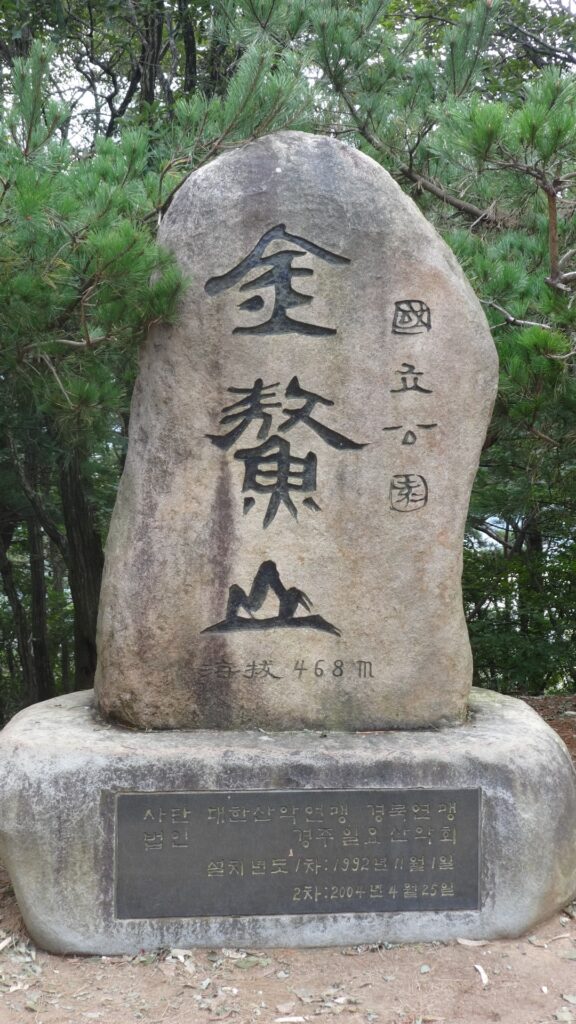
We continued downhill to the east (see the map). Again, we saw several Buddhas; but at this point, you start wondering if what you’re seeing is really another Buddha or if your brain is just going cuckoo.

We reached the village of Namsan-dong at the foot of the hill and peeked into several open spaces around the houses. To this day, we don’t know if they were deliberately left open for anyone to visit or if locals simply didn’t see the need to close them.
Do you see those large dark containers down in the photo on the right?
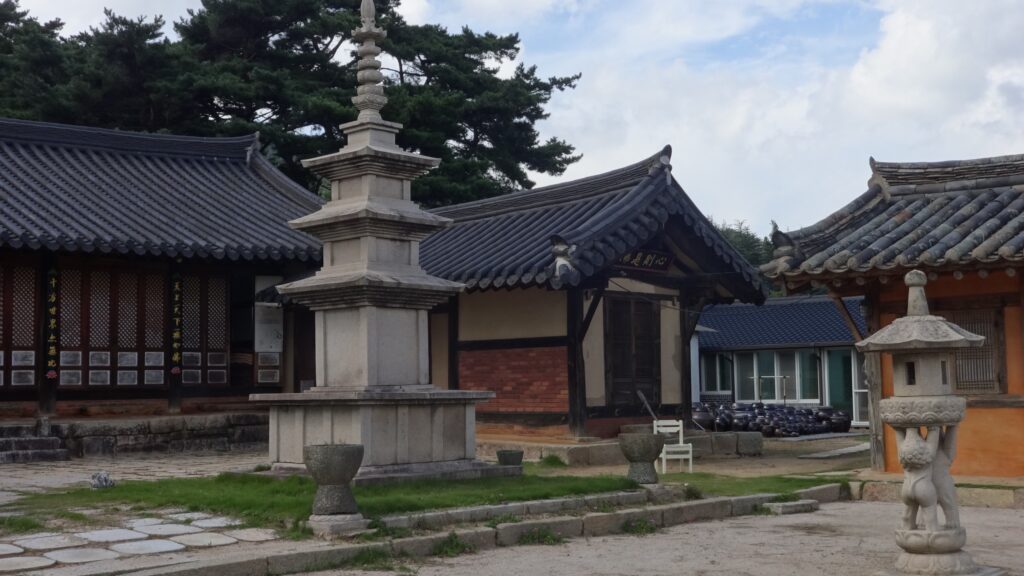
That’s how Koreans store their national treasure – kimchi.
Kimchi is a salad most commonly made from fermented cabbage, fish sauce and chili paste, but instead of cabbage, they also use radishes, cucumbers, turnips, zucchinis, and/or other vegetables. You can buy it in stores, and in Korea, you’ll get it with every main meal as a side dish, but a proper housewife should have her own recipe for homemade kimchi, which she then stores in containers like these.
Our last stop was Borisa Temple, which we reached by bus heading to Gyeongju. We hadn’t encountered many people before, but here, it was completely deserted. Well… a monk was sweeping floors at the temple, and no one else was around.
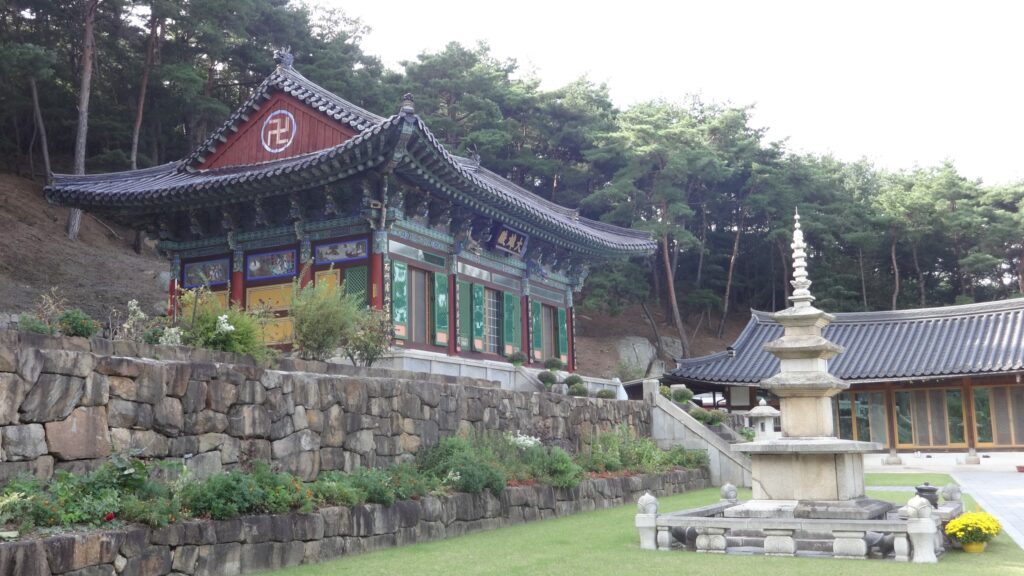
The temple was allegedly founded in the 9th century. On the right side of the hall, there’s a seated Buddha. It’s supposed to be the best-preserved statue in the entire Namsan area.
A gem from Gyeongju to finish this day with – Café Praha. Prague is a very popular destination for Koreans – a romantic city with beautiful historical architecture, trams passing through it (big deal!), it has become a filming location for Korean dramas and movies (Lovers in Prague, The Beauty Inside…). Koreans, unlike some other nations, know and love the Czech Republic.
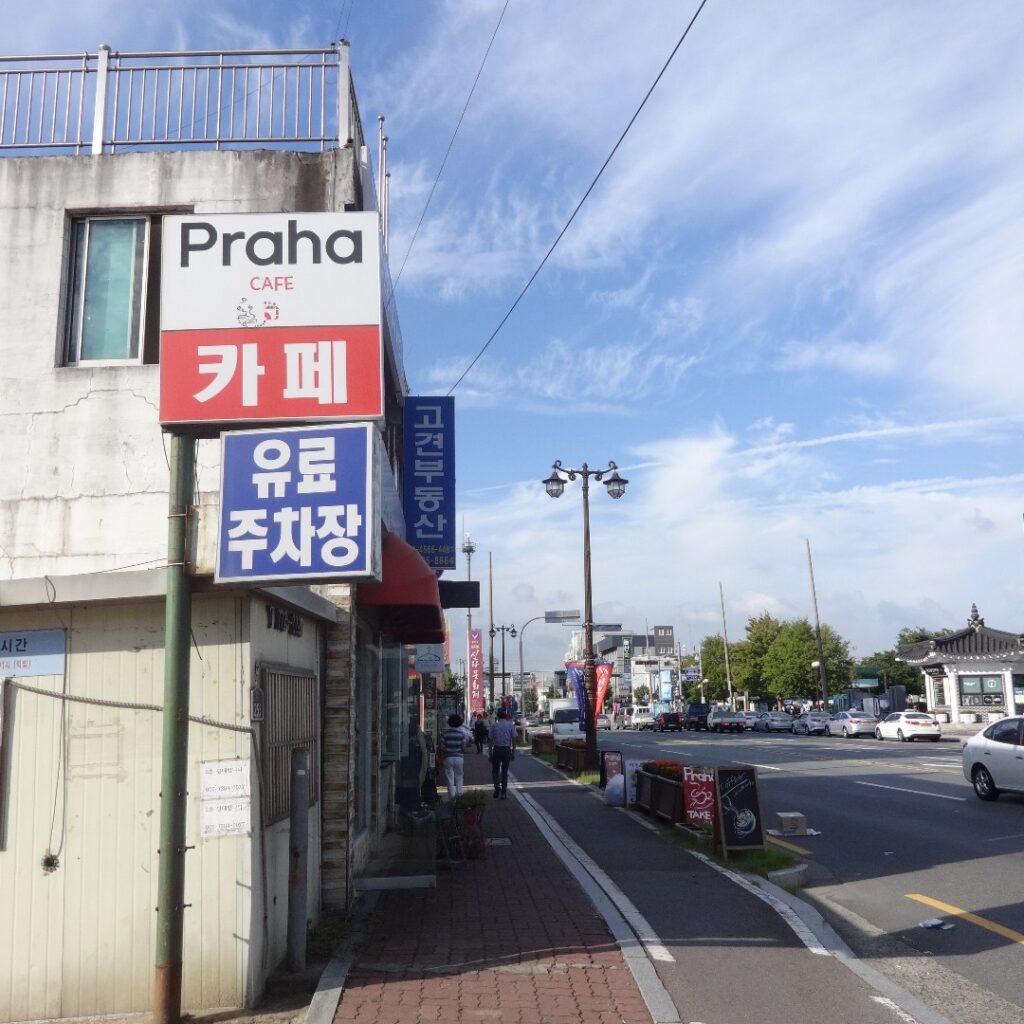
-endy-
DONKEY’S SPECIAL:
-mj-